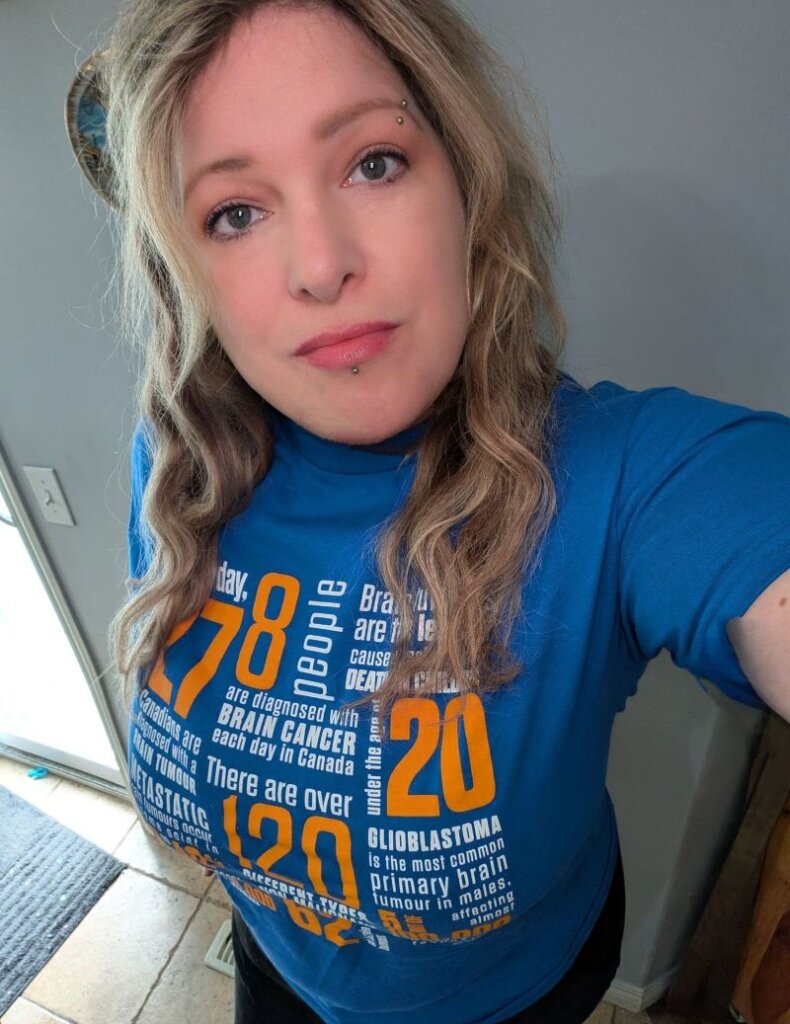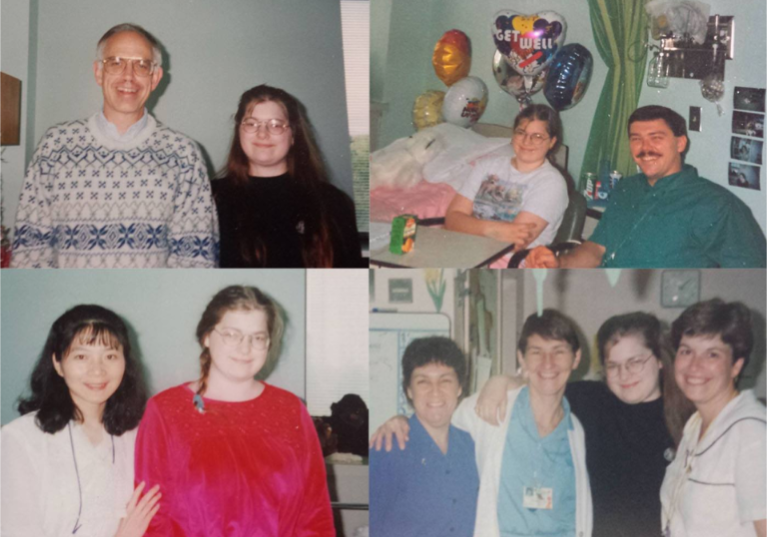
Growing up with a brain tumour
Amber Gunderson was only seven years old when she began experiencing severe headaches.
“Terrible, mind-numbing, painful blackouts, as well as seeing stars,” she describes.
By 14, she says she had no energy and had trouble leaving the house.
All the while, her headaches were written off as hereditary migraines, given her grandmother had a history of them.
“Finally, my mom said, ‘This is ridiculous,’” she recalls. “‘These are not migraines. I want a second opinion.’”
A second opinion
Amber’s doctor sent her to see a specialist, who ordered a CT scan. Something was detected during the scan, she says, but she was sent for an MRI to get a better look.
Amber, who lived in a small New Brunswick town where medical services were limited, travelled across the border to Maine to have her MRI done.
“This was back in the day,” Amber, now 44 says. “It was an older screening system, so I was there for two hours. That’s when we found out I had a brain tumour in my fourth ventricle.”
Amber remembers bouncing from doctor to doctor, specialist to specialist, with none of them addressing her directly, and one even making a joke about her experience. Feeling discouraged with the process, Amber’s mom reached out to a friend who worked at IWK Health Centre in Halifax.
Finding the right care
 They took another road trip, to Halifax this time, meeting the neurosurgeon who Amber felt much more comfortable with.
They took another road trip, to Halifax this time, meeting the neurosurgeon who Amber felt much more comfortable with.
“He talked to me directly,” she says. “Of course, being 14, I was worried about losing my long, blonde hair—which, on a scale of things you should be worried about when you have a brain tumour, probably shouldn’t top the list. But he was understanding and said he would only need to shave the bottom part.”
Amber’s surgery was scheduled during the summer, another tough break for a 14-year-old. The relatively good news for her was that her tumour—a choroid plexus papilloma—which was the size of a golf ball, was non-malignant and fully removed during surgery.
Starting over
“I had to re-learn how to walk,” she says, of her recovery. “My eyesight was also messed up. I had to do different exercises with an optometrist, to train my eyes not to move in different directions.”
At home, Amber’s parents sensed something was still off with her. She’d been sleeping a lot and her personality wasn’t quite the same.
They took her in for further testing, which revealed a buildup of fluid around her brain. Amber then had a second surgery, having a shunt installed to relieve her brain of the buildup.
The timing couldn’t have been worse, again, as Amber was set to move from junior high to high school.
“I missed the beginning of my high school year,” she says, “and then spent the rest of that year trying to catch up to everyone else.”
Looking back, Amber wishes she could have taken more time to recover, both physically and mentally, but understands her family circumstances wouldn’t have allowed it.
“It seems to be like, ‘You’ve recovered because you’re physically fine,’” she says, “but there’s a lot of trauma that comes with the experience. Not being able to walk or talk, having people bathe me—your whole sense of self is taken away.”
Rediscovering herself
 Amber didn’t let her challenges hold her back. If anything, they propelled her forward to where she is now.
Amber didn’t let her challenges hold her back. If anything, they propelled her forward to where she is now.
“I was always told I wasn’t very good with math and science, but I don’t think I was taught in a way that I would learn,” she says. “I started taking courses on my own and realized I am good at it, and that I just learn differently.”
Amber now works as a pipefitter in Stony Plain, Alta., doing maintenance work on support systems within power plants.
“Working with my hands, using the skills I’ve learned as a pipefitter, really helps my brain in ways that I didn’t realize it would,” Amber says.
Amber is also a busy mom, with four kids ranging in age from 22 to three.
Though her life has taken a positive turn, Amber will never forget the day—30 years ago—that she was diagnosed, putting her on the trajectory she is today. She urges anyone in a similar position to look after their mental health as well as their physical health, something she didn’t realize was so impactful at the time.
“I had a lot of struggles in the beginning that I didn’t realize would be struggles.”
Along with celebrating her 30-year “craniversary,” as she calls it, Amber and her family participated in this year’s Brain Tumour Walk in Edmonton. Amber even made 3D-printed, brain-shaped fidgets for all who donated to her team, Cerebral Power.
Amber’s journey has been anything but easy, but she hopes her story reminds others to trust their instincts, ask questions, and prioritize healing, both inside and out.
“It’s not just about surviving,” she says. “It’s about finding your way back to yourself.”